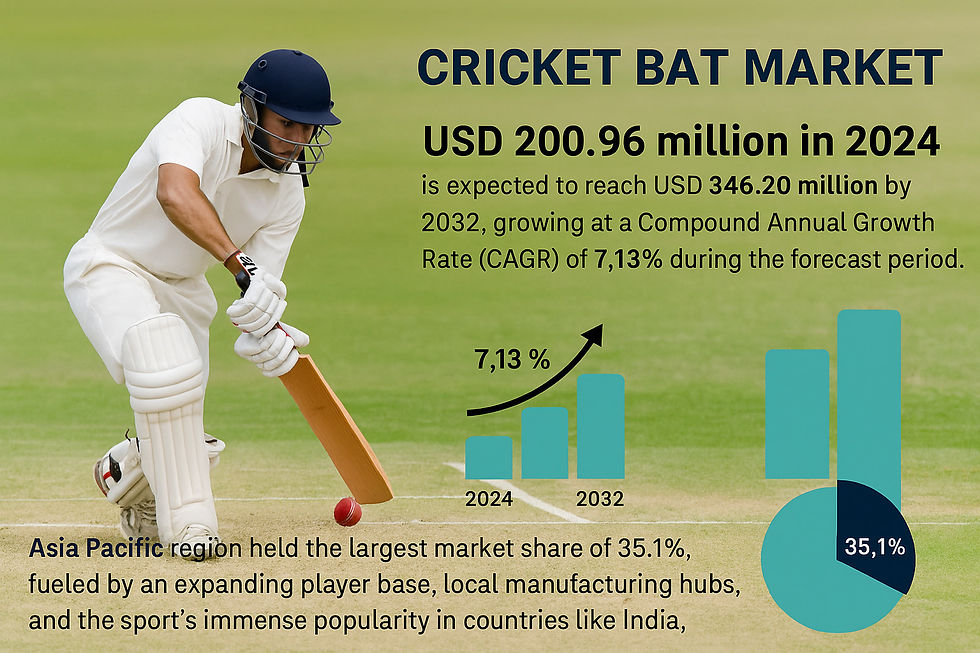Personal Care Products Market Share in 2025 & Forecast Highlights
- Reddy S
- May 29
- 3 min read
Personal care products—spanning hygiene, grooming, and beauty—play a vital role in everyday routines. Growing awareness of self-care and personal hygiene has significantly increased demand, especially for hair and skincare items, fueling market growth. While the COVID-19 pandemic initially curbed spending on non-essential products in 2020, it also heightened hygiene consciousness. This shift led to a surge in demand for sanitation-focused products, contributing to market recovery and growth later in the year.
Market Overview:
In 2024, the global personal care products market was valued at USD 379.88 billion. It is projected to rise from USD 401.57 billion in 2025 to USD 631.94 billion by 2032, reflecting a compound annual growth rate (CAGR) of 6.69% during the forecast period.
List of Key Players Mentioned in the Report:
· Reckitt Benckiser Group (U.K.)
· Unilever PLC (U.K.)
· The Procter & Gamble Company (U.S.)
· Kimberly-Clark Corporation (U.S.)
· Beiersdorf AG (Germany)
· L'Oréal S.A. (France)
· Estee Lauder Companies, Inc. (U.S.)
· Shiseido Co. Ltd. (Japan)
· Kao Corporation (Japan)
· Colgate-Palmolive (U.S.)
Key Industry Development:
In October 2023, Shiseido launched a new wellness-focused brand, Shiseido Beauty Wellness (SBW), in Japan. The company plans to expand the brand across Asia, including China, by 2025. This strategic move reflects the growing consumer interest in wellness products that support both mental and physical well-being.
Segmentation:
Skin Care Segment to Lead, Driven by its Popularity among Gen Z and Millennials
As per type, the market is divided into hair care, color cosmetics, oral care, fragrances, skin care, and others. The skin care segment is set to dominate the market, driven by younger demographics such as Gen Z and millennials who prioritize skin health, making skin care an essential part of daily routines.
Synthetic Segment to Dominate on Account of its Affordability
By form, the market is bifurcated into synthetic and natural. The synthetic segment is poised to capture the key personal care products market share due to the affordability of synthetic ingredients, which allows brands to offer competitive prices, especially in price-sensitive markets.
Female Segment Dominated the Market due to Higher Spending on Personal Care and Beauty ProductsIn terms of gender, the market is segmented into male and female. The female segment led the market, with more spending on a diverse range of products such as hair care, cosmetics, and skincare.
Supermarkets & Hypermarkets Command the Market due to Easy Product AvailabilityBased on distribution channel, the market is divided into supermarkets & hypermarkets, online stores, specialty stores, and others. With a broad product selection and established presence, supermarkets & hypermarkets lead the market, providing immediate availability and shopper convenience.
In terms of region, the market is categorized into Europe, North America, Asia Pacific, South America, and the Middle East & Africa.
Report Coverage:
The global market report offers an in-depth analysis of market size, forecasts, and segmentation by gender, form, type, and distribution channels. It also highlights key players, industry trends, product launches, and the impact of COVID-19 on the growth of the market.
Drivers and Restraints:
Increased Consumer Awareness toward Maintaining Hygiene to Boost Market Growth
Growing awareness of personal hygiene post-pandemic has fueled demand for hand sanitizers and antibacterial wipes, supporting market growth. Educational initiatives and health campaigns have strengthened hygiene practices, increasing product adoption. According to the WHO (2021), proper hand hygiene can prevent up to 50% of healthcare-acquired infections, further driving consumer reliance on personal care products.
However, the risk of skin irritation from chemical-based products could hinder the personal care products market growth.
Regional Insights:
Asia Pacific Dominated the Market Owing to Rising Focus on Health and Hygiene
Asia Pacific dominated the market, valued at USD 131.93 billion. Increased young consumer consciousness about good health and hygiene propels demand for personalized products. The blend of Western beauty standards and local brands enhances market expansion. India’s large, young population (65% under 35) positions it for significant growth, with projections to become the most populous country by the next decade.
With a well-established retail mix of supermarkets, hypermarkets, and online platforms, North America offers easy access to a broad range of personal care products. The synergy between online and offline channels boosts consumer satisfaction and demand. In Q3 2024, e-commerce sales grew 7.5% Y-o-Y, accounting for 16.2% of total retail sales. In the U.S., a cultural focus on grooming, especially among women, accelerates demand for skincare.
Competitive Landscape-
Key Players Focus on R&D to Capture Key Market Share
The global personal care products market is highly competitive, with diverse competitive, with diverse players and innovative offerings. As consumer preferences shift toward natural, sustainable, and innovative products, companies focus on R&D, sustainability, and digital tactics to fuel their market revenue.








Comments